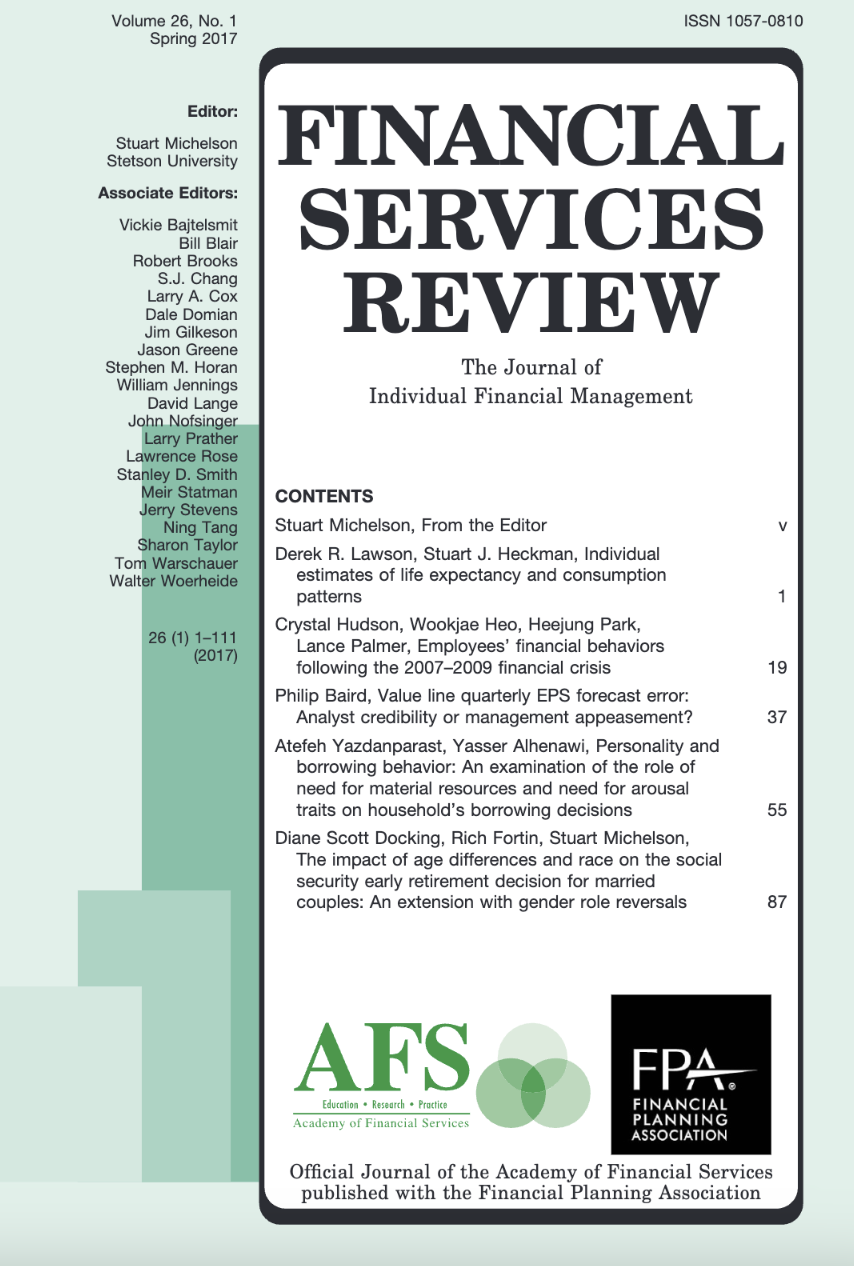Personality and borrowing behavior
An examination of the role of need for material resources and need for arousal traits on household’s borrowing decisions
DOI:
https://doi.org/10.61190/fsr.v26i1.3296Keywords:
Personality, Household finance, Financial decision, Borrowing attitude, Borrowing intentionAbstract
This research is an empirical examination of the role of psychological characteristics of household decision makers in their borrowing decisions. Using a unique household survey data that ties together relevant concepts from the Survey of Consumer Finances (SCF) and psychological and attitudinal literature, we obtain direct measures of each surveyed household’s personality scores, relevant attitudes, and financial profiles. Following regression analysis, we examine the relationship between attitude towards borrowing and intentions to apply for specific borrowing options and inspect the role of personality traits in such decisions. Specifically, we focus on tow personality traits, the need for material resources and the need for arousal, which have been largely ignored in extant household finance literature. Our findings indicate that the attitude toward borrowing and the intention to borrow are not always consistent and, more interestingly, the discrepancies between the two vary across personalities, highlighting the role of personality traits in borrowing decisions. Specifically, while the positive relationship between attitude towards borrowing and intention to borrow is intuitive, we show that this relationship is trivial for individuals who score low on need for material resources and individuals with low degrees of need for arousal. In contrast, for individuals with higher levels of need for material resources and need for arousal, the positive association between attitude towards borrowing and the intention to borrow is significantly intensified. Further, our results suggest that borrowing options are not homogenous and are motivated differently. Consistent with the view that individuals with greater need for material resources consider quantity and quality of possessions as the criteria to judge personal success, we find that these individuals have stronger intentions for mort- gages, home improvement loans, business loans, personal loans, and payday loans. Similarly, consistent with the view that individuals with greater need for arousal favor stimulation and excitement that is often associated with more spending, we find that the borrowing decisions of these individual are marked with stronger intentions for home improvement loans, business loans, student loans, personal loans, and payday loans. The intentions for credits cards and automotive loans seem to be independent from the borrower’s personality. Finally, we report strong evidence that personal attitu- dinal biases towards money, risk, financial planning, and borrowing as well as certain demographic characteristics influence household’s borrowing behavior. Our work contributes to the literature on household finance in several ways. First, we focus on two under-researched personality traits to examine their roles in household borrowing decisions. Second, this research recognizes the distinction between the attitude towards borrowing and the intention to borrow and examines the inconsistencies between them. Third, we consider a wide spectrum of borrowing options that differ in terms of risk, motivation, and loan maturity.
Downloads
Published
How to Cite
Issue
Section
License
Copyright (c) 2014 Academy of Financial Services

This work is licensed under a Creative Commons Attribution-NonCommercial 4.0 International License.
Author(s) retain copyright and grant the Journal right of first publication with the work simultaneously licensed under a Creative Commons Attribution-NonCommercial 4.0 International License that allows to share the work with an acknowledgment of the work's authorship and initial publication in this Journal.
This license allows the author to remix, tweak, and build upon the original work non-commercially. The new work(s) must be non-commercial and acknowledge the original work.


